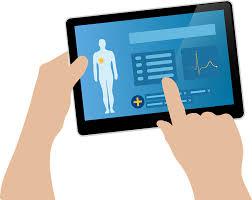
Electronic health records (EHRs) that are the digital version of paper charts of healthcare providers play a critical role in maintaining the health records of patients. The EHRs provide real-time and patient-centric records that are easily accessible by the authorized people who include physicians, healthcare staff, and the patients. Since electronic health records have comprehensive information about a patient’s health history collected from various healthcare providers whom the patient approached, they give a complete view of the patient’s health status and help the physicians make accurate and informed decisions with regard to investigations and treatment.
In the hard times, people are facing these days due to coronavirus disease, healthcare providers are under pressure to provide quality healthcare, and for this, it becomes essential to share data effectively. For this, it is necessary for healthcare providers to adapt to the changing needs of patient care. Here, the EHR systems play a crucial role in sharing accurate data in real-time.
With a sudden rise in the demand for hospital care and capacity, many healthcare providers are facing challenges in quickly arranging hospital management software at various alternative care locations set up to meet the increased healthcare requirements. It is observed that due to the various rules and regulations in place for setting up EHR systems and interoperability issues between different vendor-specific systems, healthcare facilities are encountered with hindrances in sharing critical medical information of patients.
To tackle these issues and use EHRs effectively, healthcare facilities should build and increase department units in the software, broaden Wi-Fi facilities, arrange additional hardware as required, arrange printers and other peripheral as necessary, and finally ensure that all these are working fine. For all these tasks, healthcare facilities need to have robust IT teams that can pull off their responsibilities within stringent deadlines and under pressure.
Healthcare facilities are hiring new staff to meet the demand created by the pandemic and this requires that the EHR systems are updated with the details of new employees who can access them and change the roles of other authorized people if needed. The present pandemic has created a need for the EHRs to work and provide results as intended and it is more so important now than ever before.
The coronavirus pandemic has not only increased the need for healthcare at facilities but also created a surge in the use of telehealth. Patients who are dealing with numerous ailments have to be cared for and it is in the best interest of both the patients and the facilities to treat them remotely to avoid crowding at facilities and reduce the risk of spreading the virus by staying back home. Telehealth has become a key method to address the health concerns of many people from a distance. In this scenario, it becomes vital for healthcare facilities to integrate telehealth with EHRs to provide seamless quality care.
For all those healthcare facilities that have not adopted EHRs and those that do not have capabilities to tackle this situation effectively with EHRs, this is the time to build up their EHR systems and ensure that they are well integrated with telehealth as well.
